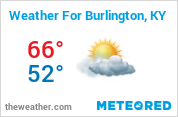Per the Aussies, we are solidly in Phase 3 which isn't cold or warm. About normal so that is exactly what we are seeing. 30s and 40s. We don't know how fast the wave weakens and how far along it gets before it collapses. If you want to not torch and get back to a wintry pattern again before we call it curtains for another year... Then you want it to start weakening right now. The MJO models are literally all over the place with there respective solutions. I would expect the OP models to be all over the place from run to run as well. We'll need to, as usual, take an Ensemble approach to longer term forecasting and trying to sniff out the next snow event.
All ensembles have the -EPO continuing with ridging over Alaska. That never goes away which is wonderful news. However... the solution we get depends on its orientation. Aleutian Islands / Bering Sea or more over the Interior / Western Canada? That makes a big difference with the down stream, SE ridge. Note the long range 500 MB maps below from the GEFS and EPS. GEFS has a stronger SE ridge due to the location of the Eastern and Northern Pacific ridging or the EPO.

EPS has it in a better location so the SE ridge is much flatter. Both are stormy solutions. One is lake cutter with mainly rain makers and the other would offer up better wintry chances for us. We'll have to wait and see. That is largely dependent on what the MJO does. These things are going to be our main opening discussion for how February is going to go and when we return to a colder pattern. If we stay mild, flooding will eventually become a problem IMO. So you want it cold while it's active so the water can be released more slowly.
GEFS_BC.png
ECMF_BC.png
gfs-ens_z500a_namer_65.png
eps_z500a_namer_61.png
You do not have the required permissions to view the files attached to this post.

